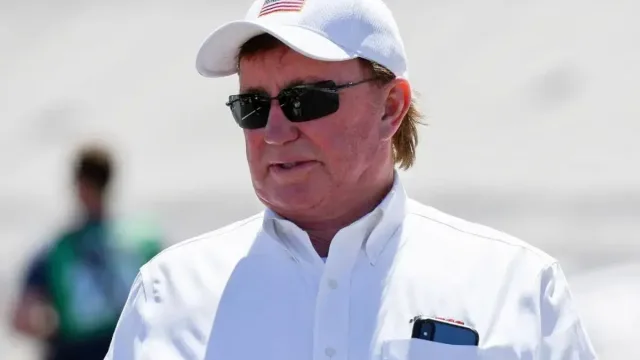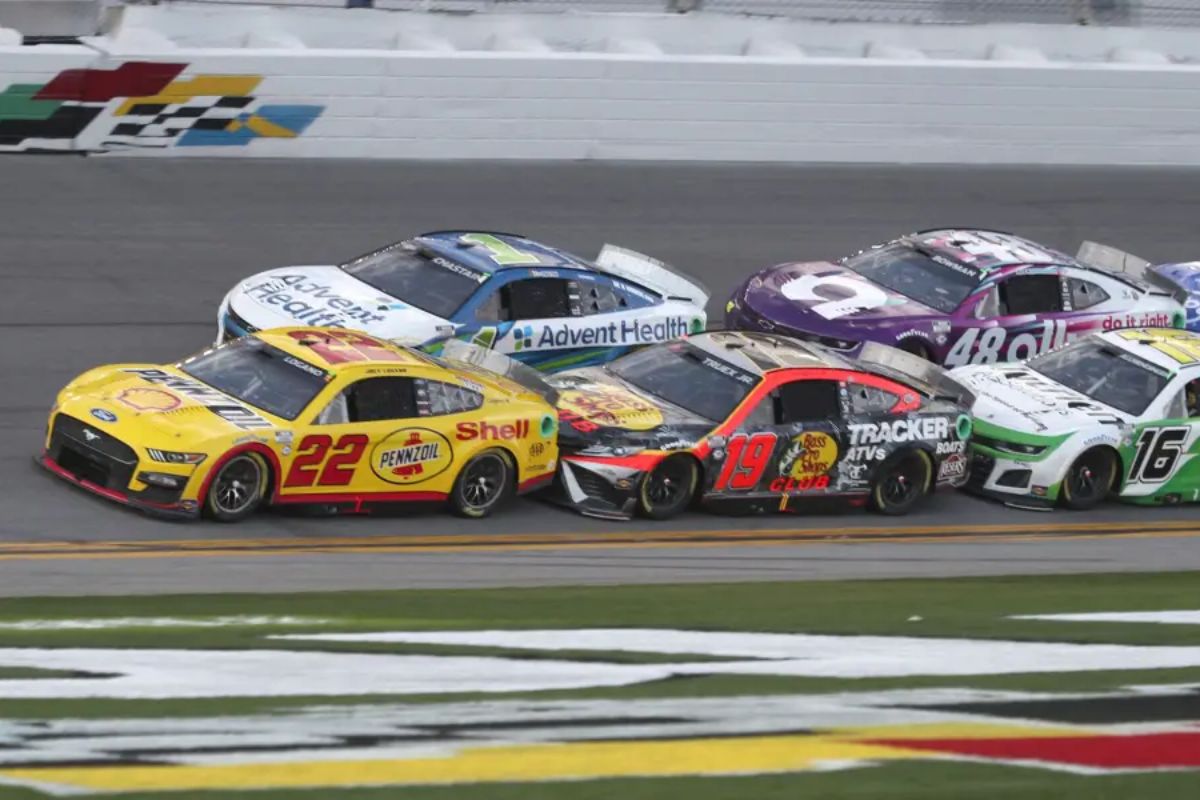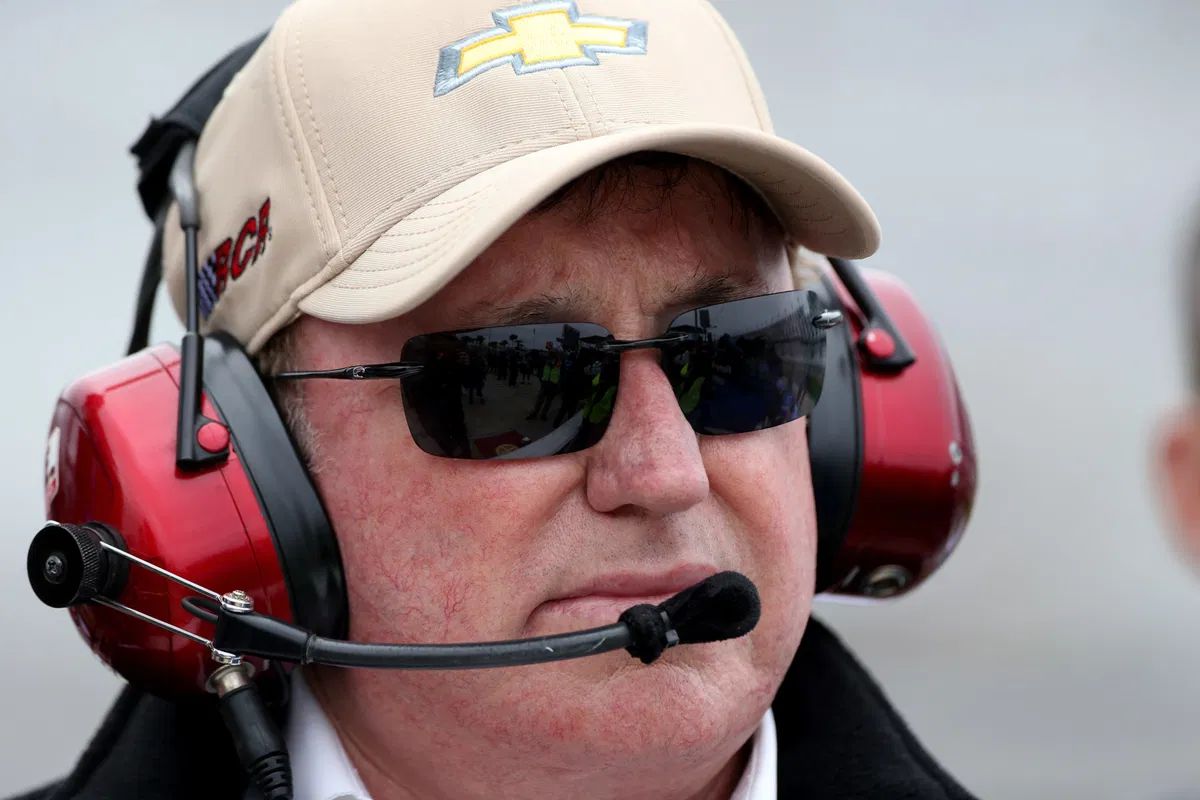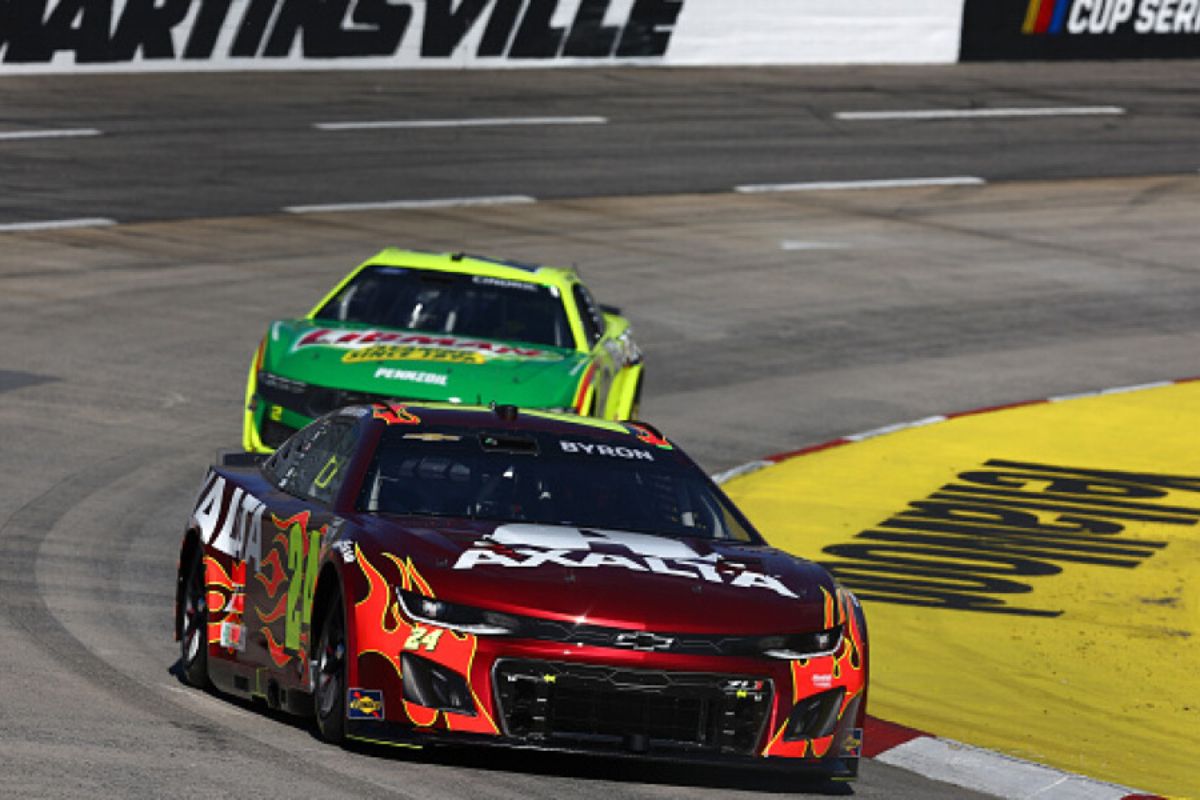Richard Childress Questions Goodyear’s Bristol Strategy: Richard Childress has raised significant questions regarding Goodyear’s tire strategy at Bristol, particularly considering the pronounced differences in tire performance observed during the spring and fall races. The premature tire failures in the spring contrasted sharply with the fall’s impressive durability, leading to suspicions about Goodyear’s transparency and the integrity of the competitive environment. As concerns mount over potential withholding of vital information, the implications for both safety and fairness in racing become increasingly pronounced. What factors could be influencing these discrepancies, and how might they affect the future of NASCAR?
Key Highlights
- Richard Childress and veterans express skepticism about Goodyear’s honesty regarding tire performance discrepancies between spring and fall races at Bristol.
- Tire failures during the spring race occurred much earlier than expected, raising questions about Goodyear’s reliability.
- Investigations by NASCAR aim to uncover potential issues with Goodyear’s manufacturing processes and tire materials.
- The contrasting tire performance observed in practice sessions has left teams confused and concerned about competitive integrity.
- There is a call for improved communication between teams and Goodyear to enhance tire reliability and safety in future races.
Mike Kelley’s Skepticism
Mike Kelley’s skepticism regarding Goodyear’s tire strategy at Bristol has sparked a noteworthy discussion within the NASCAR community. As the crew chief for JTG Daugherty Racing, Kelley’s remarks highlight a considerable discrepancy between Goodyear’s claims and the observed performance of the tires during the races.
After the recent fall race, Kelley noted, “If they tell me that enough, I’ll start to believe them,” pointing to a growing distrust among teams regarding Goodyear’s assertions about tire consistency.
The crux of the issue lies in the contrasting outcomes of the spring and fall races. During the spring event, drivers faced tire failures as early as 50 laps into the race, a catastrophic outcome that raised serious concerns about tire durability.
In clear contrast, the tires used in the fall race exhibited remarkable resilience, lasting for 200 laps without incident. This marked divergence prompts a crucial examination of Goodyear’s quality control measures and the potential factors influencing tire performance.
Kelley’s skepticism is not isolated; it resonates with other seasoned veterans within the NASCAR community, including Richard Childress, who question whether Goodyear is withholding critical information or misrepresenting the tire’s capabilities.
Such doubts can undermine the trust necessary for a successful partnership between tire manufacturers and racing teams. As discussions evolve, the implications of Kelley’s skepticism could lead to a reevaluation of Goodyear’s tire development approach, fostering greater transparency and collaboration within the sport.
Richard Childress Questions Goodyear
Richard Childress has joined the chorus of skepticism surrounding Goodyear’s tire strategy at Bristol, raising questions about the tire manufacturer’s transparency and the factors contributing to the pronounced differences in tire performance between the spring and fall races.
The March race at Bristol Motor Speedway revealed a perplexing scenario where tire degradation occurred unexpectedly, leaving teams and fans similarly puzzled.
Childress’ concerns are largely rooted in the inconsistencies observed between the spring event and the subsequent Bass Pro Shops Night Race.
Initially, many believed that the infusion of resin into the track’s concrete surface, rather than the traditional PJ1 compound, was responsible for the rapid tire falloff.
However, this method was replicated before the fall race, leading to a dominant performance by Kyle Larson, who led an astounding 462 of 500 laps with minimal lead changes.
Repost to congratulate Kyle Larson on his DOMINATING win at Bristol! pic.twitter.com/sYbc85XCHo
— FOX: NASCAR (@NASCARONFOX) September 22, 2024
This clear contrast has prompted Childress to question whether Goodyear is withholding critical information regarding their tire formulations or adjustments that could explain these divergent outcomes.
Childress’ scrutiny is not merely a personal grievance; it reflects a broader anxiety within the NASCAR community about the reliability of tire performance and the potential impact on race dynamics.
As he investigates deeper into this Bristol mystery, the focus remains on Goodyear’s accountability and the need for clarity in their tire strategies moving forward.
Childress’ Concerns
Concerns surrounding Goodyear’s tire performance at Bristol have intensified, particularly with Richard Childress‘ recent comments highlighting a perceived lack of transparency from the tire manufacturer.
Childress, a seasoned figure in NASCAR, expressed skepticism regarding Goodyear’s communication about potential alterations made to their tire specifications. His assertion reflects a broader sentiment among NASCAR experts who find it challenging to accept Goodyear’s claims regarding tire performance.
Childress articulated his concerns succinctly, stating, “I don’t know if they changed the tiniest little thing in the tire and didn’t tell us but that’s sometimes how it works.” This statement emphasizes a critical issue in motorsport where even minor changes can greatly impact performance outcomes.
The context of resin application before practice sessions and the subsequent use of PJ1 Trackbite on the track surface raises further questions about the transparency of Goodyear’s operational protocols.
The lack of clarity surrounding these practices contributes to an atmosphere of distrust, which is detrimental to the integrity of the sport. Childress’ remarks suggest that stakeholders are not merely questioning tire performance but are also scrutinizing the processes that govern tire development and deployment.
The implications of these concerns extend beyond Bristol, as they could influence team strategies and overall competitive dynamics in NASCAR. Consequently, Childress’ insights invite a critical examination of Goodyear’s practices in order to guarantee that all teams operate on a level playing field, rooted in transparency and trust.
NASCAR’s Investigations
Amidst the growing skepticism regarding Goodyear’s tire performance at Bristol, NASCAR has initiated investigations to address the concerns voiced by team owners and crew members. The situation has drawn attention, particularly from Richard Childress and Keith Rodden, who have highlighted inconsistencies in tire durability and performance, especially given the prior testing conditions. Rodden noted that despite the heat during the July test, the introduction of PJ1 compound improved tire life, yet this weekend yielded no visible issues, raising questions about Goodyear’s tire strategy.
“There has to be something they can trace, the base materials that go into the tires. It was really hot at the test in July and they had the same issues. Then they put down some PJ1 and it got more life out of the tires. To come here this weekend and not have a single issue, it’s a real mystery.” – Rodden
The investigations are essential not only for addressing current uncertainties but also for ensuring the integrity of the sport. NASCAR is poised to examine the materials and manufacturing processes involved in Goodyear’s tires, along with how track conditions interact with tire performance.
As these investigations unfold, the NASCAR community watches closely, anticipating clarity on a matter that has implications for both competitive fairness and team strategy. The outcome will certainly shape future discussions surrounding tire performance and race dynamics.
Collective Confusion
The perplexity surrounding Goodyear’s tire performance at Bristol has left many in the NASCAR community scratching their heads. Despite extensive testing at the track that included six Cup Series drivers, the tire behavior observed during the spring race at Bristol remains elusive. Subsequent experiments at both the All-Star Race and Richmond failed to replicate the spring’s extraordinary results, indicating a deeper issue at play.
Kyle Larson’s victory at Bristol only intensified the uncertainty, as his crew chief, Cliff Daniels, echoed Richard Childress’ sentiment regarding the challenge of recreating the spring conditions. Daniels emphasized the unpredictable nature of the concrete tracks, suggesting that an element of surprise contributed to the spring’s tire performance.
“I think it would be very hard to recreate the spring again because of the element of surprise. I do think it’s a real thing at the concrete tracks.” – Daniels
This notion of unpredictability is further supported by Drew Blickensderfer, crew chief for Stewart-Haas Racing, who noted the noticeable contrast between anticipated tire wear and the actual performance observed during practice.
“The tire tests they did here with 14 car, it was just like March, you know. 50 laps, maybe before you had cords on both right sides so we came here, expecting that and lo and behold, we had 45 minutes of practice, and for 40 minutes of it, people were running the top and we ran 70 straight laps with no issues.”
We could go 120 laps with no issues. Not sure what is completely different, but it’s not what … everybody expected.” – Blickensderfer
Blickensderfer’s observations—that teams expected to experience tire degradation akin to earlier tests—underscore a collective confusion among crew chiefs. With the ability to run considerably more laps without issues than previously anticipated, the incongruence between expectations and reality raises questions about Goodyear’s tire strategy.
This environment of uncertainty not only fuels speculation but also suggests that both Goodyear and NASCAR may need to reevaluate the factors influencing tire performance at Bristol. As the NASCAR Cup garage grapples with these inconsistencies, the quest for clarity continues, leaving many in a state of bewilderment.
News in Brief: Richard Childress Questions Goodyear’s Bristol Strategy
The discrepancies in tire performance observed during the Bristol races have raised considerable concerns regarding Goodyear’s tire strategy and transparency. Richard Childress and other veterans question the reliability and safety of racing conditions, suggesting that essential information may be withheld. As NASCAR investigates these issues, the collective confusion surrounding tire durability highlights the need for clearer communication and increased accountability within the racing industry to maintain competitive integrity and the safety of all participants.
ALSO READ: Richard Childress Racing Partners With Mack Trucks: A New Era in NASCAR Transportation



